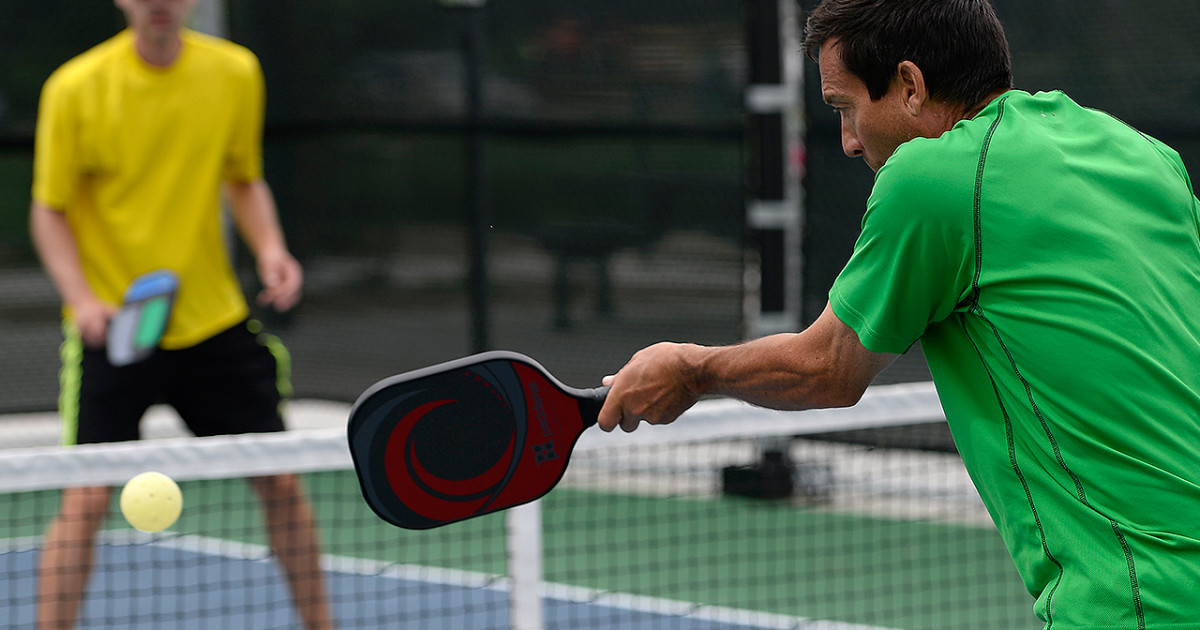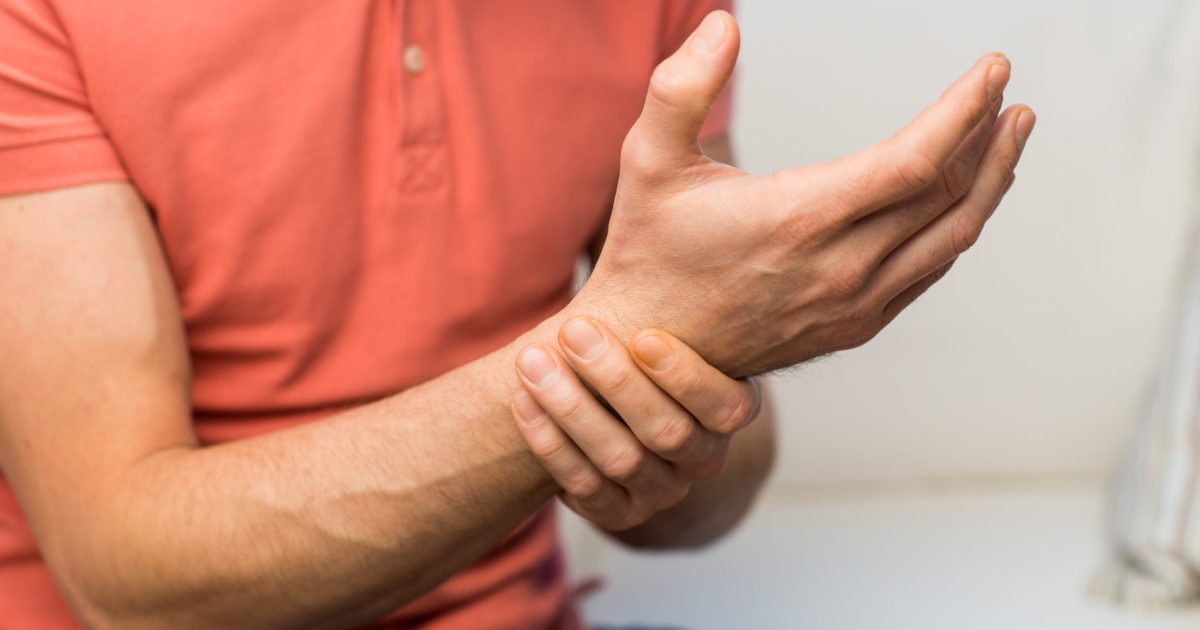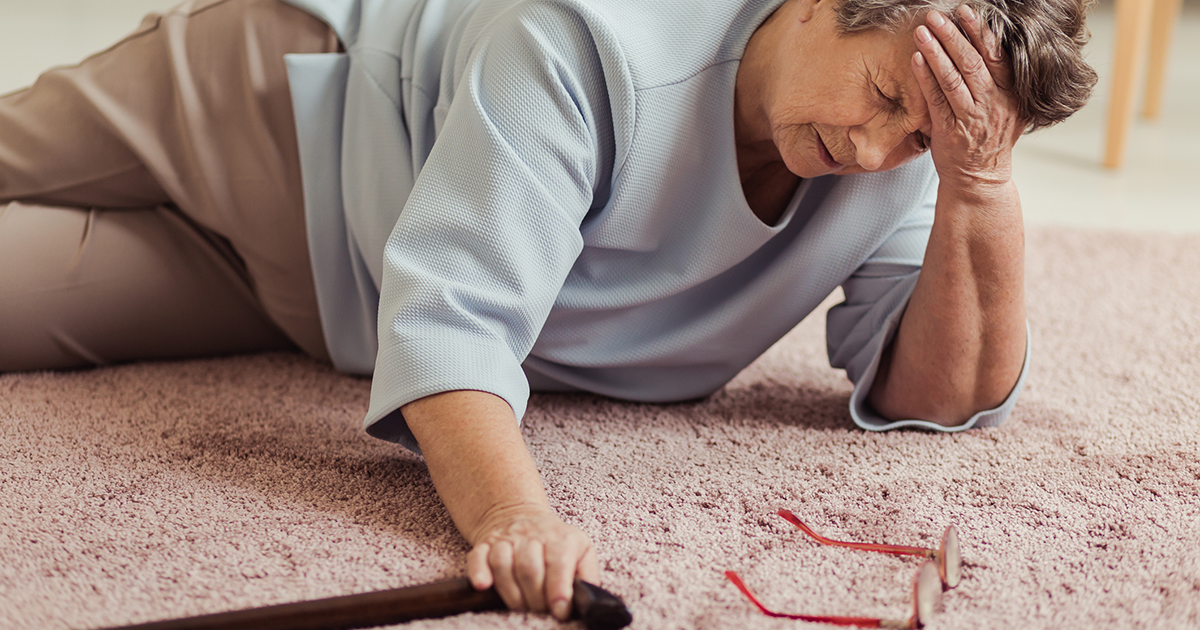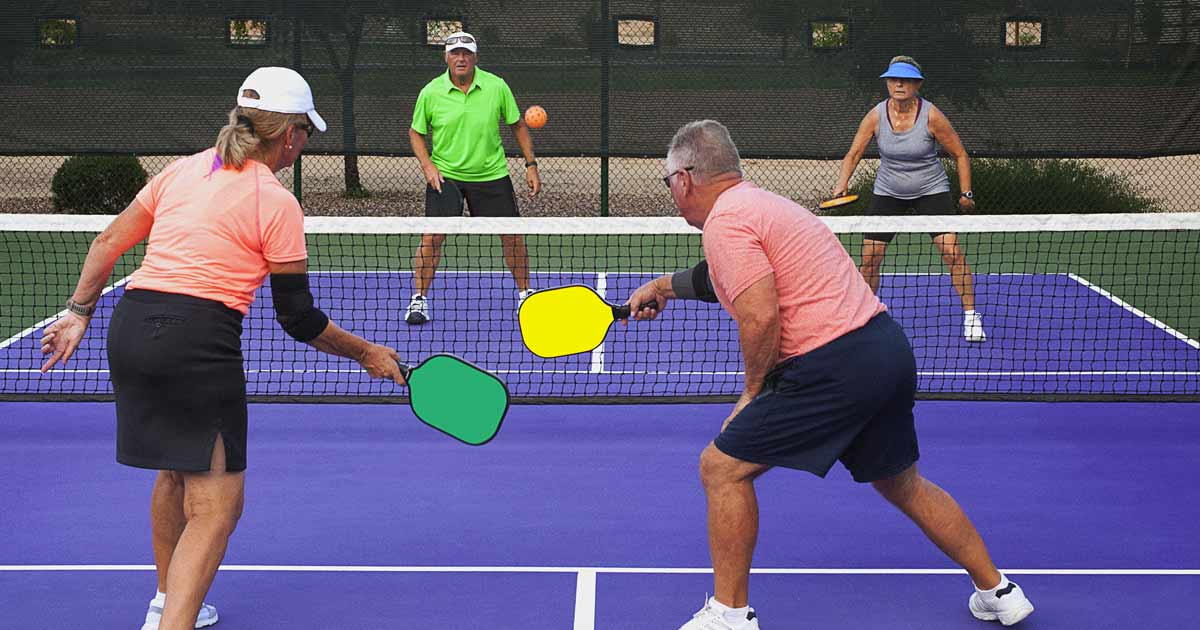Treating Osteoporosis Through Pickleball
Osteoporosis is a progressive disease that causes the bones to become increasingly porous, losing both density and quality. The condition typically develops in older adults over fifty years old, and the disorder is more common in women than in men. Osteoporosis can be detected with bone density scans, which many health care professionals recommend. Scans are particularly important for osteoporosis, as it generally has no warning symptoms, and patients who have not been scanned often discover they have the condition only after they fracture a bone. When early symptoms are present, they usually include back pain, and patients may notice they begin to have a stooped or hunched posture or a reduction in height. The wrists, hips, and spine are the most common locations for fractures associated with osteoporosis. To prevent the condition, doctors recommend the use of medications to strengthen the bones, and exercise is also advised as another component of maintaining strong bones.
The sport of pickleball is a low-impact aerobic activity similar to tennis, and it is appropriate for all ages and skill levels. When practiced as part of a regular exercise routine, pickleball can help with the treatment of many conditions, including osteoporosis in the ways outlined below.
Benefits Bone Density

Regular physical activity builds bone density by placing a moderate amount of stress on the bones, stimulating bone growth. Resistance training exercises create force when muscle pulls against the bones. Common resistance training exercises include using dumbbells, resistance bands, and weight training machines. In particular, exercises such as leg presses, bicep curls, and shoulder presses are effective strength training activities. Squats, push ups, chin ups, and press ups are also ideal for bone health. While these and other high impact activities are beneficial for increasing and protecting bone density, lower impact and aerobic exercises protect bones, albeit indirectly. Pickleball can improve cardiovascular health and build strong muscles. Having strong muscles benefits bone density as it indirectly supports the construction of stronger bones.
Learn more about how to treat osteoporosis through pickleball now.
Improves Wrist Strength

Pickleball involves lots of weight-bearing on the wrist as players hold paddles and hit the ball. The sport also incorporates quick flexing and extension motions of the wrist to control the paddle and ball movement across the net. In this manner, pickleball improves wrist strength, particularly when practiced regularly. Since the wrist is one of the most common areas for fracture in osteoporosis patients, this sport may be particularly helpful in reducing that risk. Patients concerned about their wrist health or who notice a loss of strength in their hands or wrists, including an inability to pick up everyday objects, should visit their healthcare provider for an evaluation. This is especially important as some wrist injuries and small fractures may not be immediately apparent to the patient. Wrist splints and physical therapy may help those with wrist weakness or injuries to continue playing pickleball and similar activities.
Reveal the next benefit pickleball provides osteoporosis patients now.
Increases Balance

Pickleball challenges players to move quickly across distances and in several directions, and doing so helps increases balance. The sport can be unpredictable as players wait to see which way their opponents will serve the ball or move, and participants have to walk and occasionally run forward, backward, and side to side. This stimulates the muscles more than normal walking might, and it can be an effective tool for building balance in patients who have or are at risk for osteoporosis. Preserving balance is one of the most important aspects of treatment for patients, as doing so may help prevent falls and the subsequent fractures these may cause. Individuals with balance difficulties should make sure to use handrails where available and should use caution when climbing stairs. If necessary, mobility aids such as a cane or walker may provide additional support for patients with balance issues, along with pickleball.
Get to know more ways in which pickleball is beneficial to osteoporosis now.
Low-Impact Form Of Exercise

As a low-impact form of exercise, pickleball can be adapted for all skill levels, and patients with health issues such as osteoporosis can adopt additional modifications to enable them to safely participate in the game. Pickleball and other low-impact aerobic forms of exercise are especially important in increasing activity levels and fitness for older individuals and others who cannot do higher-impact sports. Maintaining a healthy weight can put less stress on the bones, thus benefiting osteoporosis patients, and it allows individuals to move more freely and have more energy, making them more likely to regularly engage in physical activities like pickleball.
Continue to discover more details on how pickleball can benefit patients with osteoporosis now.
Slows Age-Related Bone Loss

Pickleball slows age-related bone loss in older individuals and in those with osteoporosis. The bones are living tissues, and they are constantly being regenerated. However, gradual bone loss can begin as early as an individual's thirties, and fifty-five percent of Americans over fifty years old are believed to have either osteoporosis or low bone mass. Bone density can be assessed with scans, and doctors may recommend oral tablets or injections to preserve bone health and prevent additional bone loss. Exercise regimens that include pickleball and similar sports can be a useful supplement to these medications and enable patients to improve their quality of life. Patients at risk of osteoporosis and those who have a family history of this disease may wish to visit their healthcare providers to have a baseline bone scan in their forties. A combination of physical therapy, strength training, and low impact activities may all be used in conjunction with medication to optimize bone health.